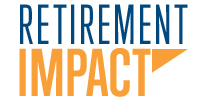As a retirement plan advisor for small businesses, navigating the landscape of Professional Employer Organizations (PEO) can be both challenging and rewarding. While PEOs offer invaluable services for startups and growing businesses, there comes a time when your business might outgrow its PEO. Recognizing this milestone is crucial for your company’s evolution and can significantly impact your bottom line and employee benefits strategy.
Why Leave a PEO?
Perhaps, your journey with a PEO may have started because of the immediate benefits in HR management, employee benefits, payroll, and compliance support. PEOs offer the advantage of securing workers’ compensation insurance at lower costs and allowing small and mid-sized businesses to offer competitive benefits packages. However, as your business matures, pain points arise which might lead you to reconsider this relationship:
- Cost Considerations: It can be difficult to assess the fees that you actually pay to a PEO for their services. Often times, the administrative cost paid to the PEO is significantly higher than the bundled cost to provide services. Comparing the cost to “rebuild” your PEO independently, you can often times find significant cost savings.
- Desire for Control: As businesses expand, the need for customized HR and benefits solutions becomes apparent. Especially in competitive industries where competing for candidates is extremely difficult. PEO’s often times can’t keep up with benefits offered in the marketplace.
- Vendor Selection: Partnering with a PEO means your choices for health benefits, workers’ compensation, and other services are often limited to the PEO’s selections. This results in poor vendor alignment and cost/benefit tradeoffs that limit choice and competitiveness.
Timing and Considerations for Exiting a PEO
Deciding to exit a PEO relationship requires careful planning and consideration of several key factors:
- Tax Consequences: Exiting mid-year can potentially have tax implications, such as double-taxation on FICA and FUTA due to nontransferable employee wage bases.
- Replacing Services: You will need to find alternatives for payroll, HR, compliance, and benefits administration. This might include hiring internal staff and partnering with new vendors.
- Insurance and Benefits: Transitioning out of a PEO means securing your own workers’ compensation, health insurance, 401k and other benefits.
- Timing is critical to make sure that all of your services are ready to go when you exit the PEO. Even one missing link can make an exit impossible and keep you in your contract for another year.
Assembling the Right Team
The good news is that experts can solve for all of these problems. Successfully transitioning away from a PEO requires assembling a team of experts to ensure a smooth changeover and continued compliance:
- Payroll/HRIS Provider: An essential member of your transition team, a payroll/HRIS provider will ensure that your payroll and human resource information systems are seamlessly migrated and set up to support your company’s operations without interruption. The right provider will offer solutions that are scalable and customizable to your growing business needs, facilitating payroll processing, benefits administration, and compliance with labor laws.
- Benefits Broker: An experienced broker can help you navigate the complexities of health insurance and other benefits to find the best fit for your company and employees.
- Insurance Agents: For workers’ compensation and liability insurance, specialized agents can offer competitive options outside the PEO model.
- Financial Advisor: A financial advisor can provide guidance on the tax implications of exiting a PEO and assist in restructuring your benefits and retirement plans to maintain or improve financial health.
- HR Consultant: To fill the HR gap left by the PEO, an HR consultant can help establish internal HR functions tailored to your company’s specific needs.
Conclusion
Transitioning away from a PEO is a significant decision that impacts every aspect of your business, from financial planning to employee satisfaction. By carefully assessing the timing, preparing for the change, and assembling the right team of experts, you can ensure that this transition supports your company’s growth and long-term success. By embracing this change you can create a wealth of opportunity to create a custom benefits, HR and compliance strategy to help you compete for talent and add to your bottom line.
For more information on how we’ve helped others in the past, click the link below.

